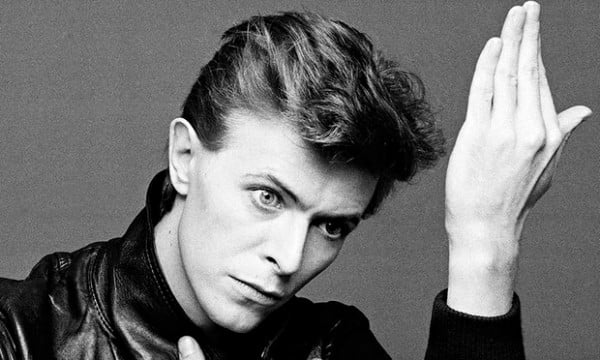Art & Exhibitions
Tap into David Bowie’s Creative Core
The Martin Gropius Bau’s Berlin blockbuster retrospective wows.

The Martin Gropius Bau’s Berlin blockbuster retrospective wows.

Alexander Forbes

Berlin may be second to host the Victoria and Albert Museum’s (V&A) sold out retrospective, David Bowie Is. But, if it weren’t for Berlin, there very well might not be a retrospective at all. David Bowie spent just three years in the city, from 1976 to 1978. But its still-present scars from World War Two and central position in the then-roaring Cold War, transformed the British musician’s practice irrevocably.
Three of his most iconic albums, which came to be known as the “Berlin Trilogy,” were recorded in the city: Low (1977), Heroes (1977), and Lodger (1979). Its anything-goes mentality in those divided post-war years—a Berlin myth that still lives on today to varying levels of truth—let Bowie and roommate Iggy Pop loose on the Schoeneberg and Kreuzberg scenes, with many late nights turning into early mornings at SO36, Chez Romy Haag, and Dschungel. Days were spent looking out the Hansa Studios windows at the Wall, which separated their bohemian lifestyle in the island that was West Berlin from the strict confines of East German life.
Just steps from those studios, the Martin Gropius Bau’s take on the V&A-curated show (on through August 10) offers an immersive look at Bowie’s life and music, with particular focus placed on those formative years in what’s now the German capital. Sixty new Berlin-specific additions find their way into the exhibition. Many are on public view for the first time.
The show retains its focus on Bowie’s public persona: his costumes, his instruments, his stage sets, and, above all else, his music. But it’s the new additions that get the viewer behind the layers of makeup and into Bowie’s head: hand-scrawled song lyrics for the Berlin Trilogy albums, personal photos taken around the city, even Bowie’s forays into art such as paintings, drawings, and sketches for his records and those of his friends.
Indeed, one distinct take-away from the show is just how integral visual art was to Bowie’s creative process. He was heavily influenced by German expressionism during his time in Berlin. He became a frequent visitor to the Brücke Museum in the southwestern corner of the city, Dahlem. There, he spent hours sketching paintings on display, in an attempt to translate their affective force into his own music.
At the Martin Gropius Bau, works by Bowie-favorite Erich Heckel play a major role, in particular his painting, Roquairol (1917) and woodcut Männerbildnis (1919). The Brücke artists’ style also heavily influenced how Bowie chose to visually represent his music and that of his friends on album covers and promotional materials—just take a look at Iggy Pop’s The Idiot (1977) or Bowie’s self portrait on Heroes.
Can’t make it to Berlin? No problem. Take a virtual walk-through, below:

Installation View, David Bowie, Martin Gropius Bau Berlin, 2014
Photo: ©Avantgarde, Thomas Bruns

Installation View, David Bowie, Martin Gropius Bau Berlin, 2014
Photo: ©Avantgarde, Thomas Bruns

Installation View, David Bowie, Martin Gropius Bau Berlin, 2014
Photo: ©Avantgarde, Thomas Bruns

Installation View, David Bowie, Martin Gropius Bau Berlin, 2014
Photo: ©Avantgarde, Thomas Bruns

Installation View, David Bowie, Martin Gropius Bau Berlin, 2014
Photo: ©Avantgarde, Thomas Bruns

Installation View, David Bowie, Martin Gropius Bau Berlin, 2014
Photo: ©Avantgarde, Thomas Bruns

Installation View, David Bowie, Martin Gropius Bau Berlin, 2014
Photo: ©Avantgarde, Thomas Bruns

Installation View, David Bowie, Martin Gropius Bau Berlin, 2014
Photo: ©Avantgarde, Thomas Bruns

Installation View, David Bowie, Martin Gropius Bau Berlin, 2014
Photo: ©Avantgarde, Thomas Bruns

Installation View, David Bowie, Martin Gropius Bau Berlin, 2014
Photo: ©Avantgarde, Thomas Bruns